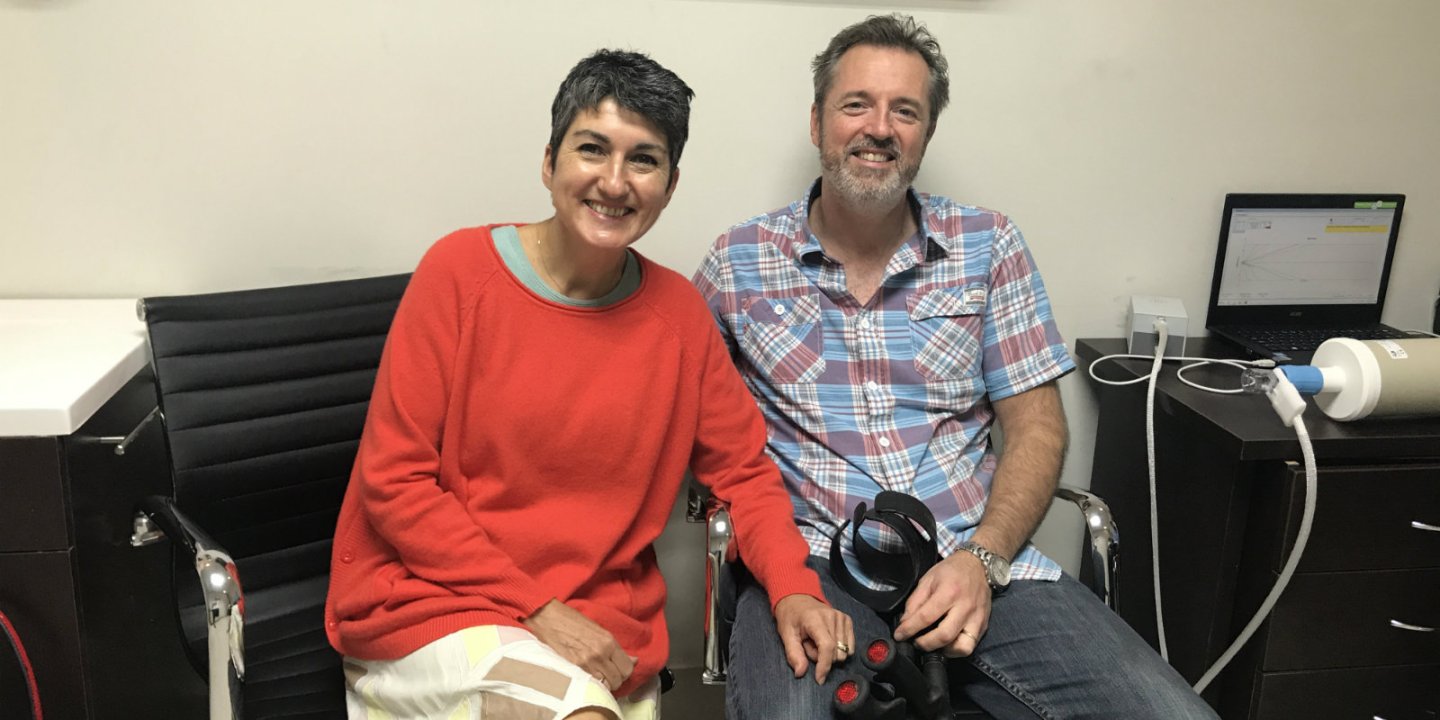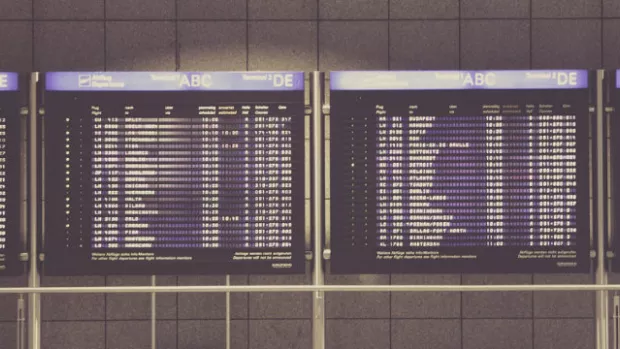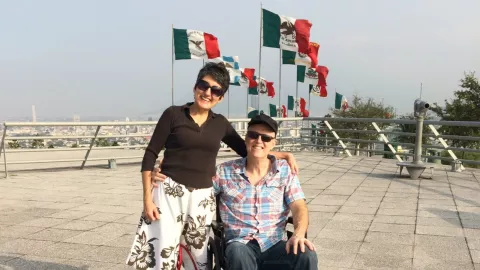
I travelled to Mexico to have HSCT
Three years ago Miles was diagnosed with MS. Last year, he travelled to a clinic in Mexico to have HSCT. This is his story.
Why would I choose, against medical advice, to have HSCT? In a nutshell, like so many people with MS, I was desperate. I’m 52 years old and was diagnosed with MS just over three years ago but showed symptoms for at least three years before to that. At the time of diagnosis I had an Expanded Disability Status Scale (EDSS) score of 2 (I could walk without assistance for at least 500 meters).
Over the past three years my mobility has consistently and rapidly declined and I now score 6.5 on the EDSS scale (bilateral assistance – crutches to you and me). I’m an optimistic person by nature, but even I could see the writing on the wall and the future was looking fairly bleak. So when HSCT offered a potential way to halt the disease I grabbed it with both of my numb fists.
Doing my research
I approached my neurologist about applying for an HSCT trial here in the UK. He was familiar with the programs and told me I had little chance of successfully applying, mostly due to my age and location. There are very few places available on the UK trials and these are massively oversubscribed. Even if I was successful it would take a long time and I didn’t feel I had the time to waste.
So it had to be abroad, and at my own expense. Internationally there are really only two ‘commercial’ places with good HSCT track records that have processed MS patients in any number. Either Dr Fedorenko’s clinic in Moscow or Clinica Ruiz in Mexico. There are other centres like the one in Chicago US. And I believe even privately here in the UK, but the costs are eye watering and well beyond our means.
A quick response from Clinica Ruiz
I approached both Moscow and Mexico and found Moscow to be noncommittal while Clinca Ruiz in Mexico were quick to respond and answer my questions. I contacted Clinica Ruiz in June and about a month later they came back to me offering a date in October at their Monterrey clinic. Much earlier than anticipated and I was tempted to put it off to next year but at 6.5 on the EDSS scale I’m at the higher limit of who they accept. One more relapse and perhaps Mexico would be out of the picture for me. So I went ahead and booked it.
In Mexico they split the chemo into two batches of two sessions one week apart. While this is still unpleasant it’s not quite as harsh on the body
A massive lump of money
So all we had to do was find £46,000! Yes, one massive lump of money! Here I was very lucky. We had some life savings and generous contributions from family, to whom I’ll be ever grateful, made up the rest. I know it’s very difficult for many to find this much money, but some people have successfully raised money through charity donations and crowd funding. I'd encourage anyone thinking of funding their own HSCT to start raising the money immediately just in case you’re offered an earlier than anticipated treatment date as I was.
There are two Clinica Ruiz centres in Mexico: Puebla which has been offering HSCT to MS patients for nearly four years and Monterrey which has been doing the same for nearly one year now. The centres are headed up by pre-eminent haematologists, Dr Ruiz Argüelles in Puebla and Dr. Gómez-Almaguer in Monterrey. Both have worked together for many years dedicating their lives to curing cancer, MS and other blood related diseases and have performed HSCT on hundreds of patients.
The 'Mexican method' of HSCT
They have in fact pioneered their own unique method of HSCT known as the ‘Mexican method’. Very briefly, most HSCT treatments involve four rounds of chemo over four days to get to neutropenia (a state when the body's immune system is effectively knocked out). This is a very traumatic and uncomfortable experience. In Mexico they split the chemo into two batches of two sessions one week apart. While this is still unpleasant it’s not quite as harsh on the body.
It has the added advantage that stem cells harvested just before the second batch of chemo can be chilled and reintroduced to the body just two days later. In the normal HSCT procedure stem cells are harvested many days before they are reintroduced and have to be frozen while out of the body.
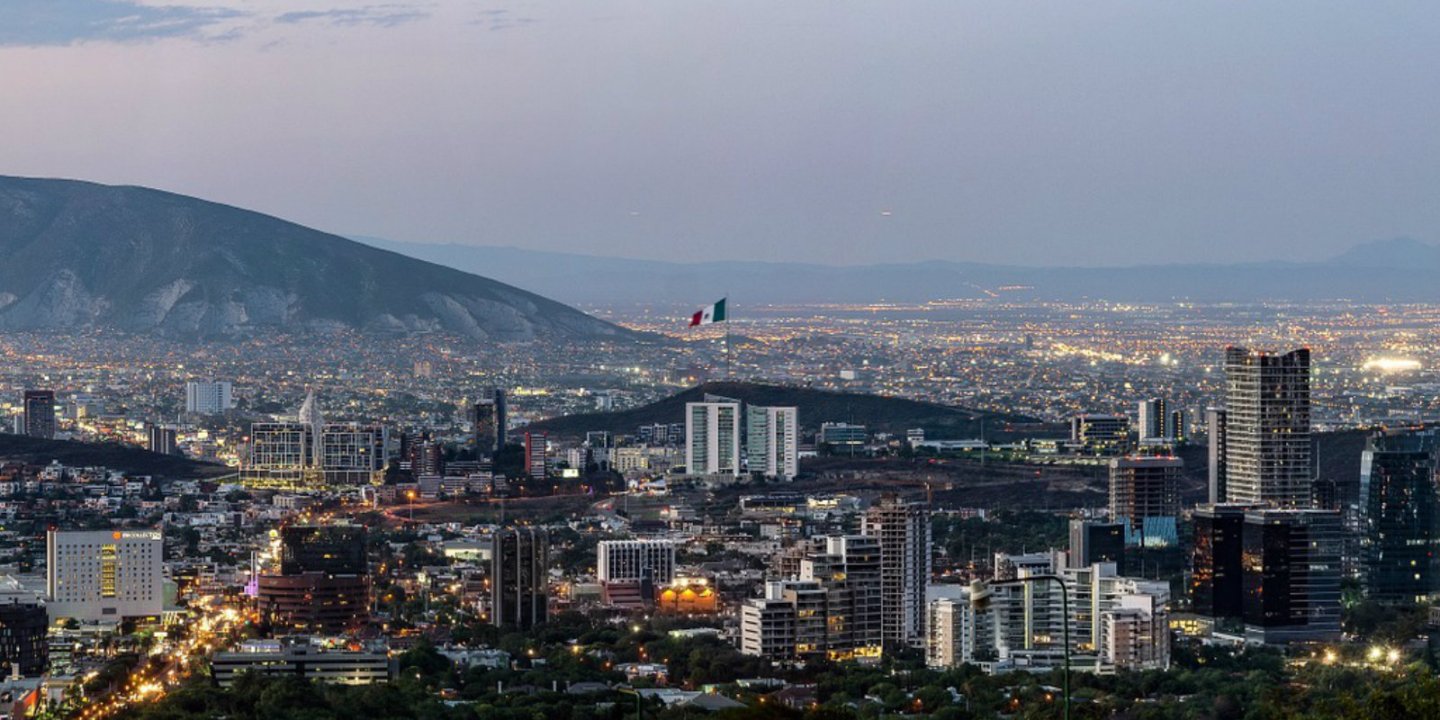
Warm welcome to Monterray
So having made the decision to go, Mandy (as my carer) and I flew to Mexico on Sunday 8 October arriving into Monterrey late in the evening. We were met by the ever smiling and enthusiastic Miguel, one of two lovely drivers from the clinic who ferried us around Monterrey for the month. I didn’t really know what to expect. In truth I’d buried my head in the sand not wanting to know too much about the place or treatment in case in put me off – I’m a wimp when it comes to medical treatment. I needn’t have worried about either.
Monterrey is a modern city full of new high-rise buildings (mostly hospitals it seems) and heavily influenced in style by US cities just across the Texan border. Our apartment was superb: modern, spacious, all the mod cons and with great views of the city and the surrounding mountains. This was our first pleasant surprise followed quickly by another when Mario from the clinic’s support team turned up, despite the late hour, to the welcome us. He handed over a personalised file with a detailed day-by-day schedule of the upcoming treatment and delivered our Mexican mobile phone. Small things, but very reassuring, especially when arriving into a strange place late at night.
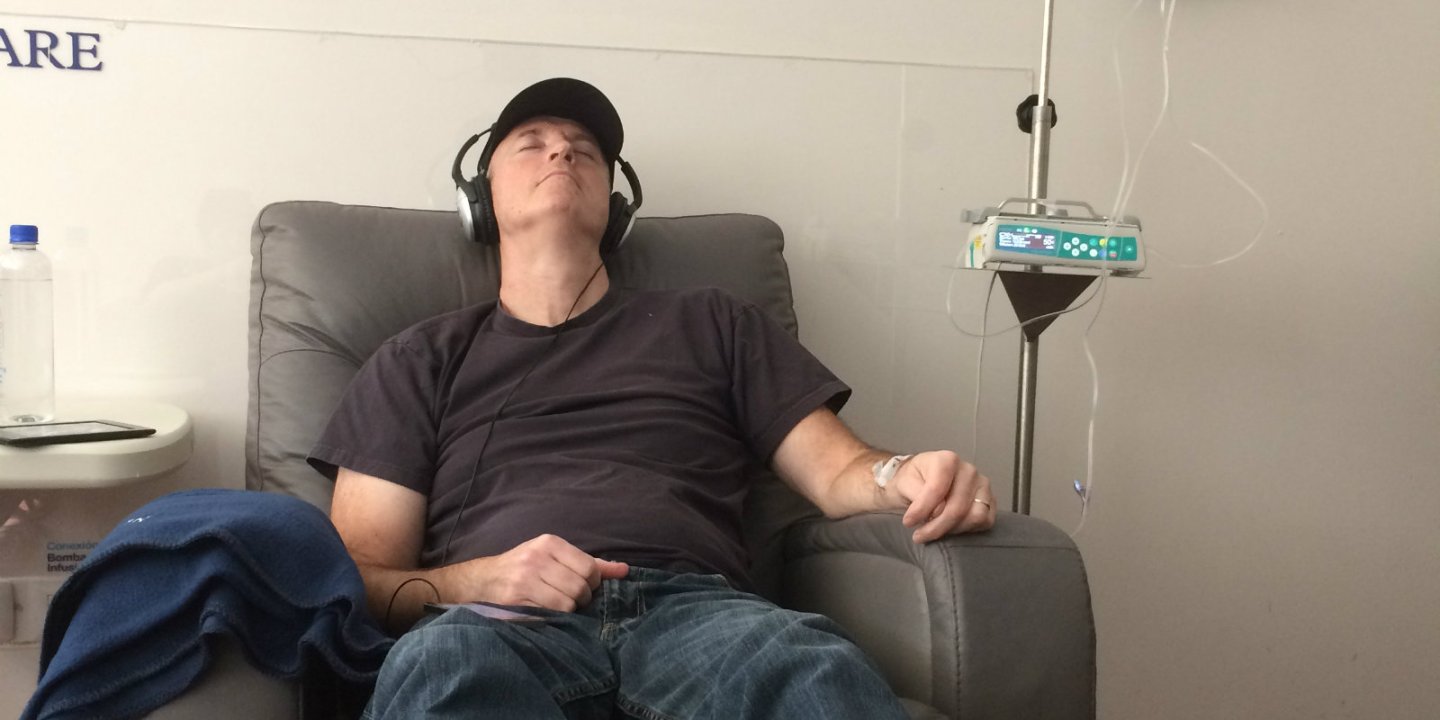
Day one: testing
Up bright and early on Monday morning for a detailed presentation on the procedure by Dr Elias, followed by a bundle of tests. Blood test, blood pressure, ECT, lung capacity, MRI review with a neurologist to check I had MS and a medical history review.
If you pass this little lot you get the green light for the first two rounds of chemo. Fortunately I passed and so for following two days I had my first two chemo sessions. I was fairly lucky in that I didn’t suffer too badly thanks, in part, to fistfuls of anti nausea drugs.
Dull days and hair loss post chemo
The next 8 days after chemo were fairly dull. Daily drugs intake to encourage stem cells to mobilize from the bone marrow and occasional blood tests to count the stem cells. Having said this, one traumatic thing did happen. My hair fell out! I’m told it should grow back but perhaps curly and a different colour.
This leaves me with a real dilemma. Like most men I chose my hairstyle in my late teens and have stuck to it rigidly for the past 35 years despite changes in fashion and male pattern baldness. Nearly four decades later I find myself having to modernise my look. Maybe I’ll delve into the 1990’s for inspiration!
Stem cells and the apheresis machine
On the ninth day I’d mustered enough of those tiny life giving stem cells to enable a hook up to the apheresis machine and start the harvest. The apheresis machine is an amazing piece of kit. It extracts blood from one arm, whirrs, buzzes and pumps the blood back into the other arm minus your stem cells. Again I was lucky (don’t worry, the easy ride was soon to change) in that my veins were large enough in my forearm not to need a surgically implanted PICC line inserted in my neck.
Within one hour of Mandy making the call, I was in ER in a private hospital and two hours later in a private room hooked up to broad spectrum antibiotics
Reunited with my stem cells
After the harvest it’s straight into the final two batches of chemo and then it’s your ‘birthday’ when you’re reunited with your harvested stem cells. A very happy day indeed. And that’s it, you go into neutropenia, confine yourself to the apartment for 10 days, taking extra care over your personal hygiene and take it easy. Well that’s how it’s supposed to happen and this is where my luck ran out.
Infection and ER
I became one of the unlucky 15% of patients who develop an infection during neutropenia. The clinical staff immediately put me on intravenous antibiotics for three days which at first seemed to work, but on the fourth day my temperature sky rocketed. This is when the Ruiz clinical and support staff really came into their own.
Within 1 hour of Mandy making the call I was in ER in a private hospital and 2 hours later in a private room hooked up to broad spectrum antibiotics. I was told that hospitalisation was fairly rare as most people respond to the initial batch of antibiotics.
During this time David and Irving from the support team sat with Mandy and I for many hours offering us reassurances. That along with regular visits from the doctors convinced us both I was in safe hands. And they were right.
Lost in translation
After a fairly rough night I started to respond to the antibiotics. A night where a lost-in-translation moment with the Spanish-speaking nurse had Mandy convinced she was asking if I needed a priest for the last rites. Thank goodness for Google translate which cleared up the misunderstanding. In fact she was asking if I’d like a social visit from a catholic English-speaking visitor organisation the following day. Not funny at the time but we smile about it now.
This all happened four days before we were due to fly home and we thought there was no chance we’d be on the flight. But the clinical staff knew otherwise and as soon as I was out of neutropenia and out of the danger zone my strength flooded back and I was good to go.
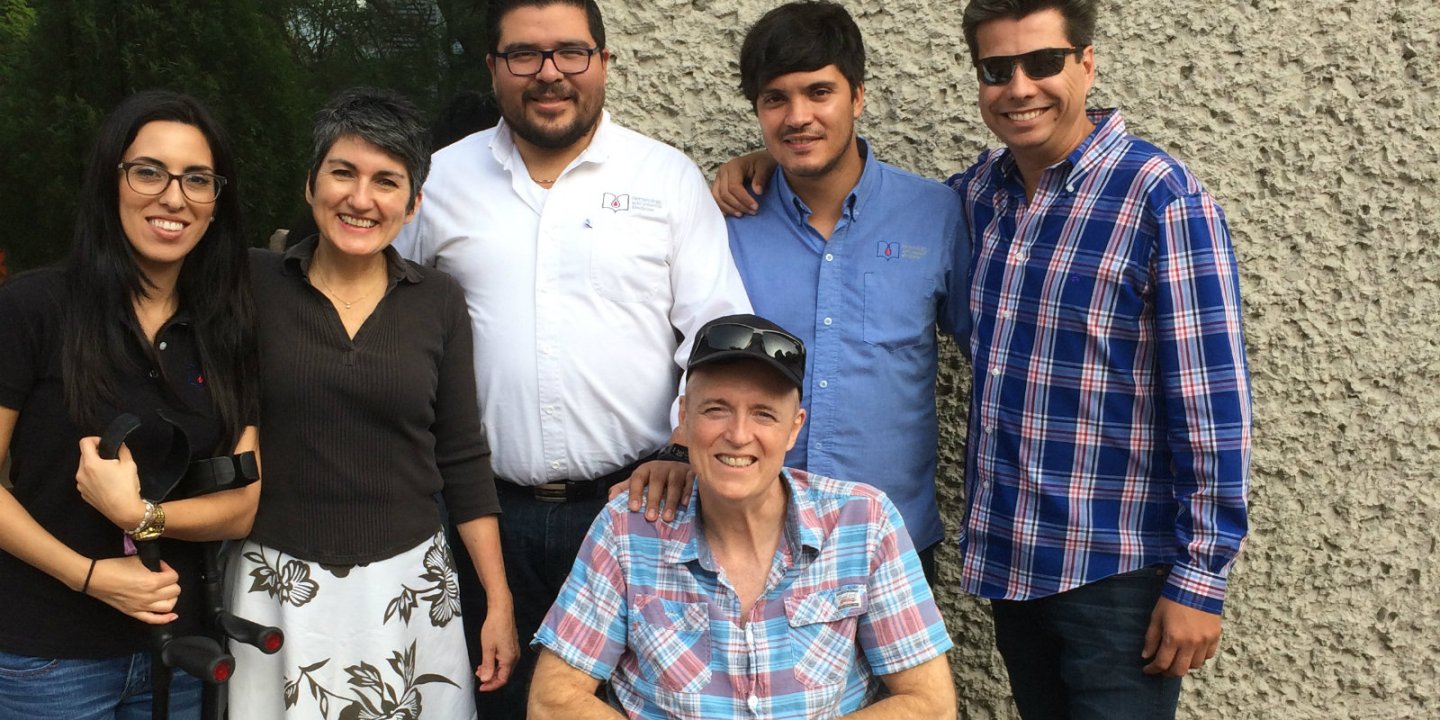
Home but no answers yet
I’m now back home taking it very easy trying to recover from the huge impact the last month has had on my body. The big question is ‘did it work’? Sorry to disappoint but I don’t know and probably won’t know for at least a year, when comparative MRI scans will be able to show no disease activity or otherwise.
What I can tell you is that Clinica Ruiz say 75% to 80% of the patients they accept for HSCT show a halt to MS disease activity and 50% show some improvement to their disability. But not everyone is eligible in the first place. Clinica Ruiz will be publishing a peer-reviewed paper with their results in near future so watch out for that. I do feel I’ve taken some control over MS and until I know the result I remain optimistic that I’m MS free.
Eternally grateful
Finally, I’d like to thank both the support and clinical staff at Clinica Ruiz Monterrey for their unstinting care and attention throughout the treatment, their friendship, their professionalism and their deep knowledge and experience of HSCT.
I’d also like to thank my darling wife Mandy for her incredible care and bravery when I needed it most. I couldn’t have done it without her.
